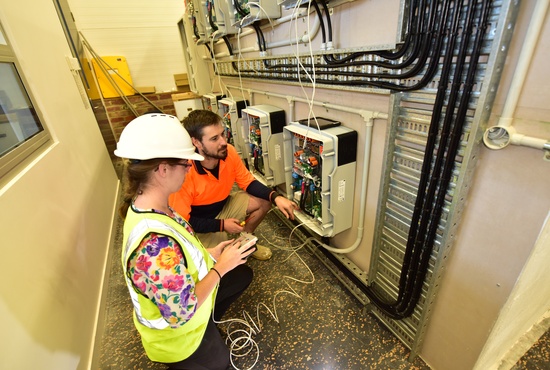ITP battery test does your homework for you
With more than two million Australian households already installing rooftop solar pv, we have become world-leaders in distributed energy.

Now home batteries are emerging as the next front in the home energy revolution.
But with the popular lithium-ion options costing as much as $15,000 by the time they are installed, how can you be sure they will go the distance and deliver value for money?
With a grant from ARENA, ITP Renewables has undertaken a trial of 18 home batteries to independently investigate how they perform in real-world conditions.
The project has been rolled out in two phases. The first commenced in August 2016 testing six lithium-ion systems, one conventional lead-acid battery and one advanced lead-acid battery pack. In July 2017 the project was expanded to include eight additional lithium-ion battery packs, one zinc bromide flow battery and an Aquion ‘saltwater’ battery bank.
The batteries are being cycled in a climate controlled facility at Canberra’s Institute of Technology to replicate Australian real-world conditions. To best mimic the charging and discharge patterns associated with rooftop solar, each battery pack is charged over several hours, left to rest for a short period, then discharged over a few hours to replicate late afternoon and evening demand.
The test cycles are more rigorous than the batteries may experience in a typical installation, but the testing methodology has been designed to ensure that conditions are still within the manufacturers’ specifications.
While failures in ten of the eighteen batteries tested have required replacements to be installed, or the battery removed all together, valuable lessons are being learned and there are positive results that can help consumers make a strategic investment.
What has testing shown so far?
Results from the ITP’s testing to date shows that the Sony and Pylontech batteries are at the top of the field for capacity retention. Despite their tough workload, the claimed capacity of these batteries has not diminished over time.
The Sony, Samsung, Tesla, BYD and Pylontech units are proving to be the most reliable.
The efficiency of the Samsung and BYD systems is highest. While most of the batteries can discharge about 85 per cent of the energy that is stored within them, these two have reached approximately 95 per cent efficiency.
Seven of the batteries tested have operated without any reported problems to date – GNB Sonnenschein Lithium, Samsung SDI, Sony Fortellion, Tesla Powerwall, BYD B-Box and Pylontech US2000B, GNB Sonnenschein PBA.
The testers point out that home battery technology is new and evolving rapidly, so it is important that consumers do their research. For battery buyers, the real-time results from the battery test centre can provide another source of information to consider alongside the claims made by the manufacturers.
Under ITP’s testing regime, four units tested have experienced major failures with the battery packs or no longer receive manufacturer support, so are no longer participating in the program – Kokam Storeaxe, Ampetus Super Lithium, Simpliphi PHI 3.4, Aquion Aspen.
The trial’s newest report shows that six batteries have experienced problems and been replaced, or are due to be replaced. These units are still participating in the test, but have not yet been replaced or completed enough cycles to draw meaningful conclusions – LG Chem Resu, LG Chem Resu HV, Ecoult UltraFlex, Redflow Zcell, Tesla Powerwall 2, Alpha ESS.
The latest results show that the CALB CA100 is operating well now but required an individual faulty cell to be replaced soon after its commissioning.
Lessons to be learned, so far…
The fact so many of the batteries have failed shows the need for caution when investing large sums of money in a home storage system.
ITP’s researchers point out that one manufacturer and one distributor (selling rebranded Sinlion batteries) have become insolvent since the trial began. This has left the test with a battery that isn’t cycling properly, but no way to have it fixed or replaced. Post-sale support is obviously an important consideration, particularly given the high failure rate.
The testers emphasise the fact that the industry is evolving quickly, with new manufacturers entering the market as others exit. There are positive signs though – regulatory requirements associated with new installations are clearer than they were in 2016 when the trial started, and Australian standards are being developed which address safety and performance.
The latest report finds that with so many new products included in the test, there have been a range of issues needing to be overcome. The arrival of batteries has been delayed, basic information has been inaccurate or overly ambitious which had led to delays commissioning the units, and some systems were delivered without all the required installation instructions or components.
This all comes back to the need to choose carefully if you are in the market for a home battery. Thanks to the ITP tests there is data available about the reliability and real-world performance of home storage systems, to help buyers make an informed decision.
The full results of the battery trial can be found here and new reports are released every six months.
LIKE THIS STORY? SIGN UP TO OUR NEWSLETTER

ARENA